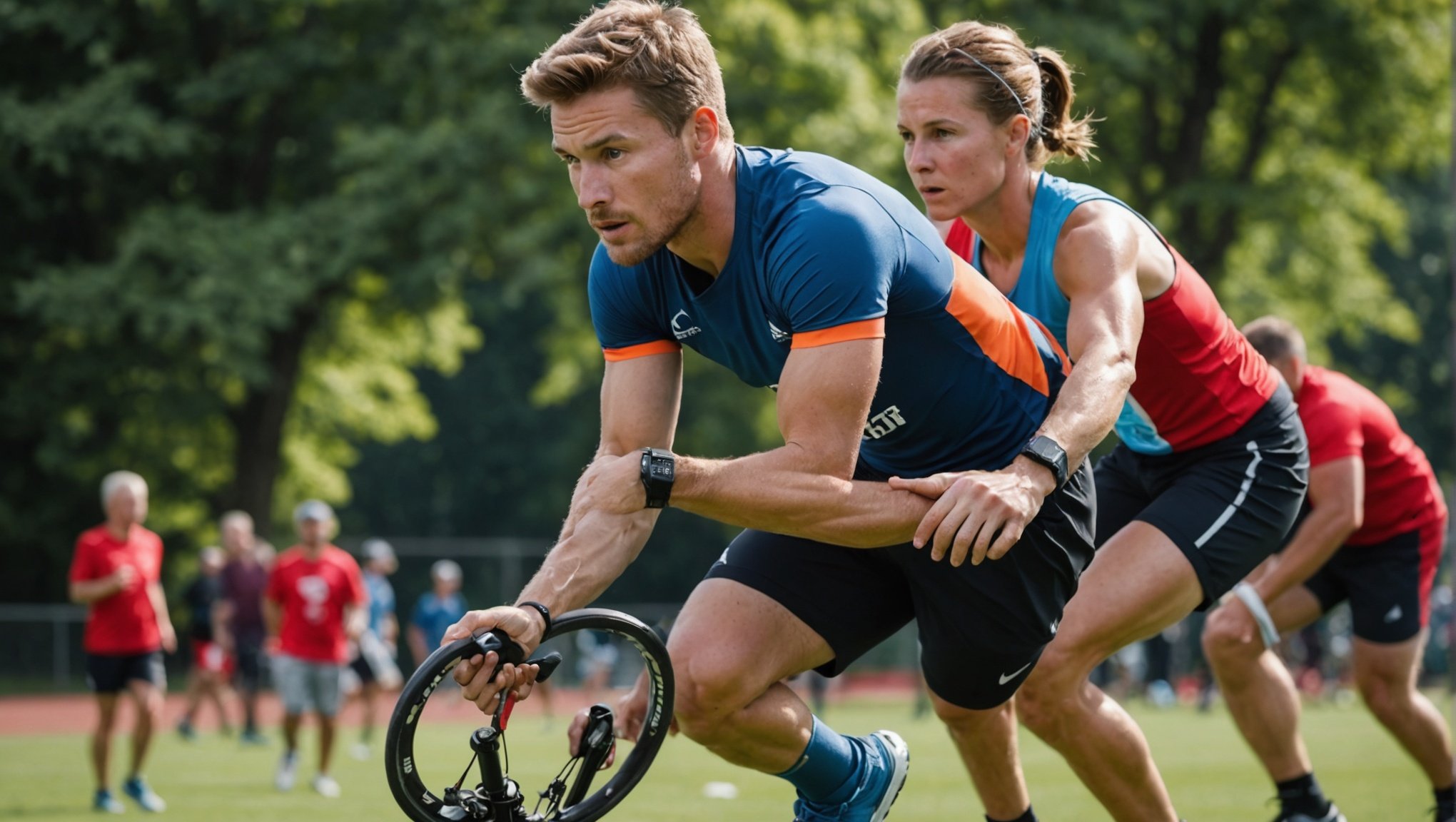Understanding Continuous Glucose Monitoring (CGM)
Continuous Glucose Monitoring (CGM) technology is transforming how individuals manage diabetes. A CGM system typically consists of three core components: a tiny sensor placed under the skin, a transmitter that sends data, and a receiver (or smartphone). Together, these components work to provide real-time insights into glucose levels.
But what makes CGM technology particularly advantageous in diabetes management? Compared to traditional finger-prick methods, CGM offers a comprehensive view of glucose trends over time. This continuous tracking allows users to proactively manage their condition rather than reacting to periodic snapshots of their blood sugar levels.
Also to discover : Revolutionizing Rugby: Tailoring Protective Gear for Players with 3D Printing Technology
The Role in Diabetes Management
CGM systems play a crucial role in optimizing diabetes management by enabling timely interventions. They provide valuable feedback on how factors such as diet, exercise, and medication impact blood sugar. Patients can adjust their lifestyle and treatment plans with greater precision, potentially reducing the risk of long-term complications.
Differences from Traditional Monitoring
In contrast to traditional glucose monitoring, which requires frequent blood samples, CGM is less invasive after sensor insertion and minimises disruptions in daily life. Its ability to alert users about glucose spikes or drops before they become symptomatic represents a significant leap forward in personalized care. This technology empowers individuals with diabetes to maintain better control and improve their overall health.
Have you seen this : Unlocking Muscle Recovery: The Impact of Targeted Amino Acid Supplements on Sprinters’ Performance
Benefits of CGM for Diabetic Athletes
Continuous Glucose Monitoring (CGM) offers significant benefits to diabetic athletes by providing real-time glucose tracking, enhancing athletic performance, and managing energy levels efficiently. For athletes with diabetes, understanding glucose dynamics during training and competition is crucial. Real-time glucose tracking allows athletes to monitor their glucose levels continuously, enabling them to make timely adjustments to their diet or insulin levels. This immediate feedback can prevent the sudden onset of hypoglycemia, a condition that can severely impact an athlete’s performance if not addressed swiftly.
Athletic performance greatly benefits from the insights provided by CGM. Athletes can optimise their energy management during workouts and competitions by tailoring their nutrition and insulin use based on glucose trends. This proactive approach ensures that energy levels are maintained and prevents the energy dips that could compromise performance.
Most importantly, CGM reduces the risk of hypoglycemia by alerting athletes to declining glucose levels before they become critical. Optimising glucose management supports stable athletic outcomes and reduces injuries or performance dips associated with low blood sugar events. By integrating CGM into their routine, diabetic athletes can train and compete with confidence, knowing they have the tools to manage their diabetes effectively while maximising their performance potential.
Practical Application of CGM in Athletic Training
Incorporating continuous glucose monitoring (CGM usage in sports) can revolutionize how athletes approach their training techniques, leading to exceptional performance optimization. CGMs provide real-time data, allowing athletes to tailor their nutrition plans effectively and design their daily regimes for maximum efficiency.
Integrating CGM into Daily Training Regimes
Athletes can use CGM data to adjust training intensities and recovery times based on how their glucose levels fluctuate throughout the day. This information is crucial in performance optimization, as it helps in identifying the most effective training techniques. By understanding their glucose management, athletes can prevent fatigue and maintain energy levels during workouts, ultimately enhancing their performance optimization.
Using CGM Data for Tailored Nutrition Plans
Another advantage of CGM is in formulating personalized dietary regimens. By analyzing glucose trends, athletes can pinpoint the most beneficial nutritional intake, thereby refining their diets to suit specific physiological needs. This tailored approach ensures that athletes are always at their peak when engaging in training techniques that rely heavily on CGM usage in sports.
Monitoring Glucose Levels During Competitive Events
Utilizing CGM data during competition aids in strategic glucose management. Athletes can devise responsive plans by predicting glucose fluctuations and adjusting consumption accordingly. This proactive strategy is vital for maintaining energy efficiently during competitive events, confirming the importance of historical CGM data to stay ahead in their field.
Case Studies of Successful Diabetic Athletes
In exploring Athlete Success Stories, we encounter inspiring individuals who have adeptly navigated their athletic careers despite the challenges posed by diabetes. These athletes have harnessed the power of Continuous Glucose Monitoring (CGM) technologies, presenting compelling Real-life Applications of this medical advancement in their daily training and competitive environments.
One such remarkable figure is professional cyclist Phil Southerland. Utilising CGM, Southerland effectively tracks his glucose levels, making real-time adjustments to his nutrition and insulin intake during races. This proactive approach has significantly enhanced his performance, proving the tangible benefits of adopting CGM.
Moreover, swimmer Charlotte Drury has experienced improved endurance and reduced instances of hypoglycaemia due to regular glucose monitoring. Before incorporating CGM, Drury struggled with unpredictable energy levels, which hindered her competitive edge.
Analysing their journeys, a pattern of success emerges: adopting CGM enables athletes to fine-tune their bodies’ responses to physical exertion. Lessons learned include the importance of understanding personal glucose patterns and making data-driven decisions to optimise performance.
These real-life applications illustrate how diabetic athletes turn challenges into triumphs through strategic monitoring, fostering both athletic and personal growth. Understanding these experiences provides a blueprint for others aiming to balance diabetes with high-level physical achievements.
Expert Insights on CGM and Athletic Performance
Athletes are increasingly turning to continuous glucose monitors (CGMs) for optimizing performance. Expert opinions from both sports nutritionists and endocrinologists underline this trend. They highlight how CGMs offer real-time data, allowing athletes to make informed decisions about nutrition and training regimes. This is particularly beneficial for those with diabetes, where exercise can significantly impact glucose levels.
Current research findings reveal that CGMs not only help manage diabetes during exercise but also provide invaluable insights for athletes without diabetes. By monitoring glucose levels, athletes can tailor their intake of carbohydrates, ensuring they maintain peak energy levels throughout their performance. Effective glucose management can reduce fatigue and improve recovery times, a key factor in enhancing athletic capabilities.
Future implications of CGM technology are vast. As research trends continue to develop, it is anticipated that CGMs will play a pivotal role in personalized athletic training programs. This integration could revolutionize how athletes prepare, compete, and recover, offering a level of precision and detail previously unattainable. The synergy between diabetes management and athletic performance is a burgeoning field, with exciting potential for athletes seeking performance enhancement through tailored glucose monitoring strategies.
Challenges and Considerations of CGM Usage
Continuous Glucose Monitors (CGMs) are transformative for diabetic athletes, but they also present unique challenges. Amongst these challenges, athletes may face issues with device reliability and accuracy. While CGMs provide real-time glucose readings, fluctuations and interference can lead to inaccuracies. It is crucial for athletes to understand these potential pitfalls to manage their conditions effectively.
Accuracy is often influenced by factors like calibration errors or technical malfunctions. Athletes engaged in high-intensity workouts may experience physically induced discrepancies in readings due to sweat or rapid movements. This can be frustrating when precise data is needed to manage insulin levels effectively. To address these technology limitations, regular calibration and familiarity with device functions are advised.
Diabetic athlete considerations extend beyond technology. They must strategically plan energy intake and insulin regulation around training schedules. It becomes essential to integrate CGM readings with physical and dietary insights for well-rounded glucose control.
How can these challenges be overcome? Strategies include ensuring proper device placement, conducting regular checks, and combining CGM data with personal bodily awareness. Additionally, athletes are encouraged to engage with healthcare professionals to fine-tune their diabetes management plan. Through understanding and adapting, diabetic athletes can navigate CGM complexities, maximising both performance and health benefits.











